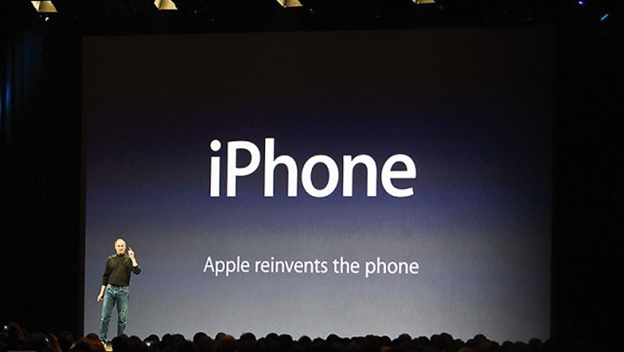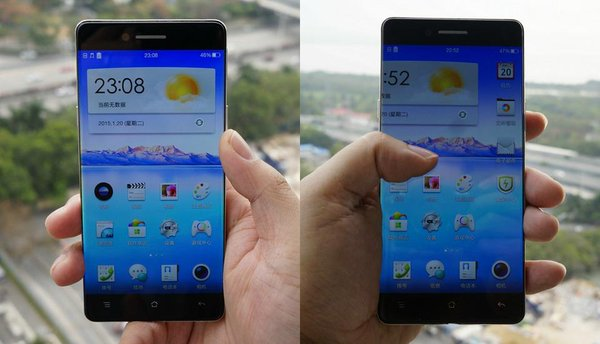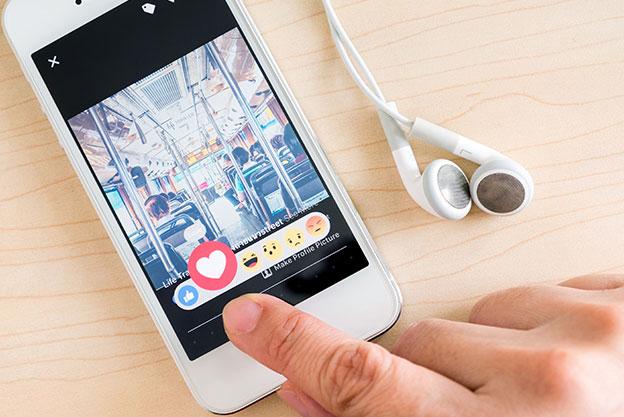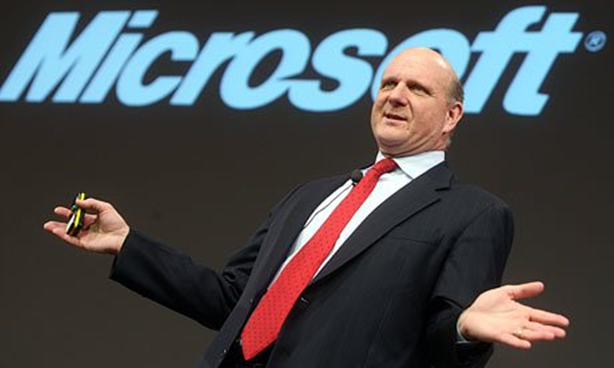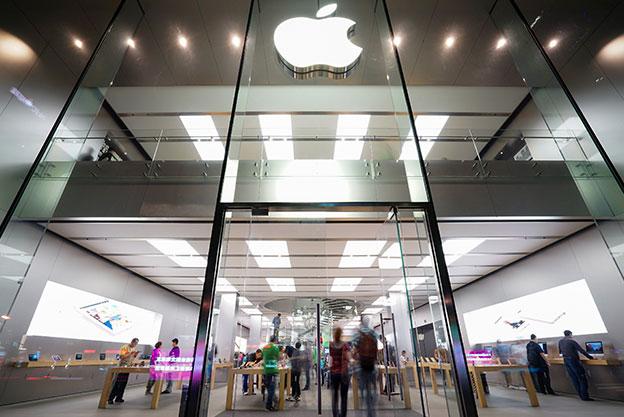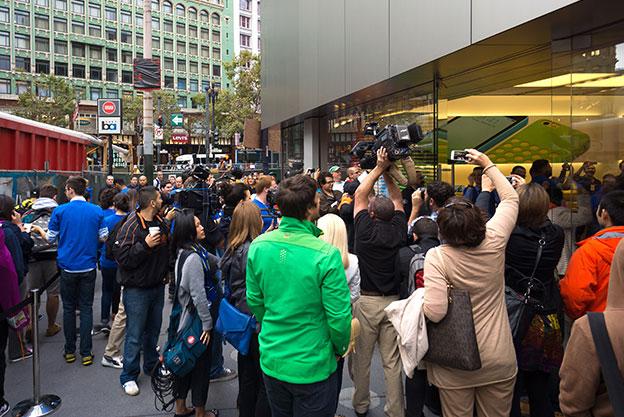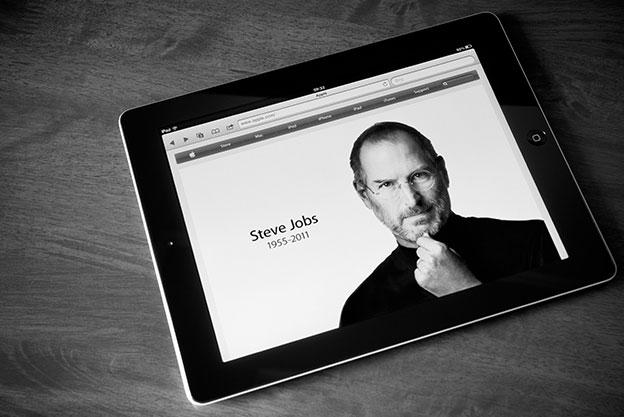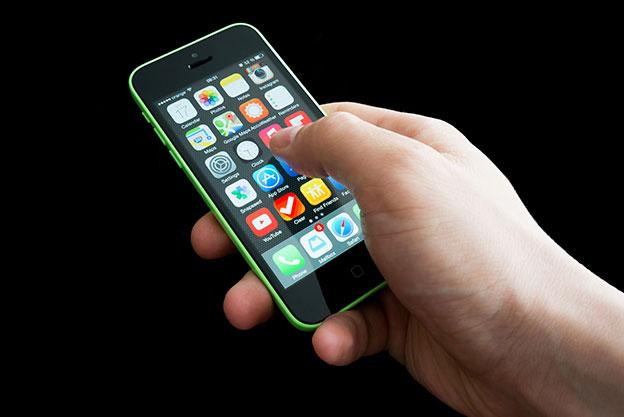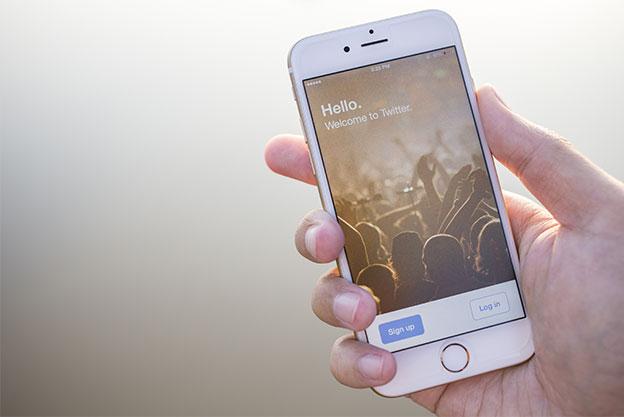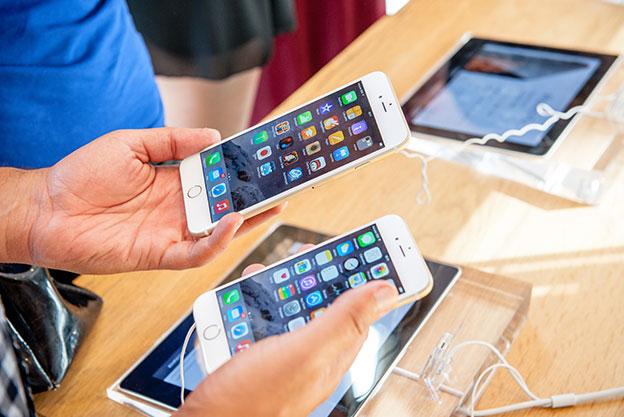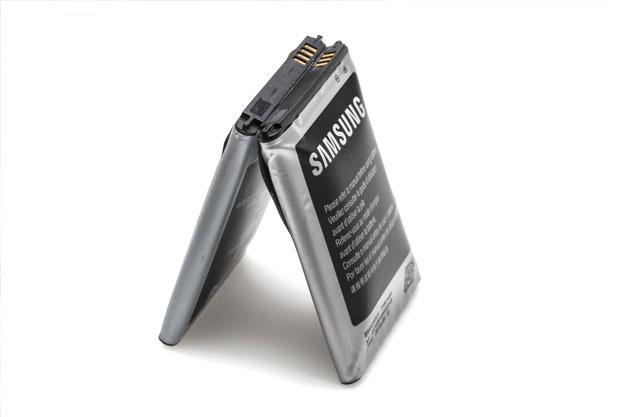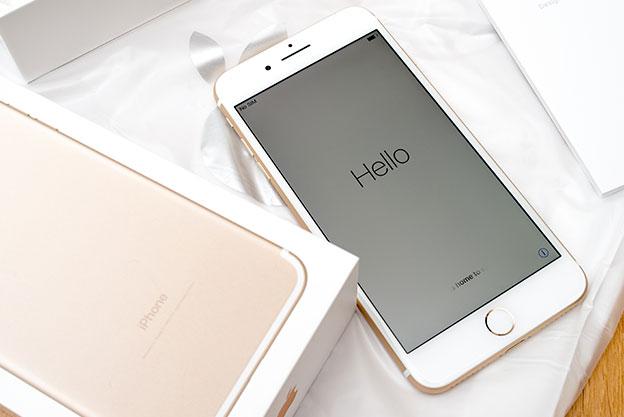![]() Posted by Cameron Francis
on
09 Mar , 2017
in
News Uncategorized
Posted by Cameron Francis
on
09 Mar , 2017
in
News Uncategorized
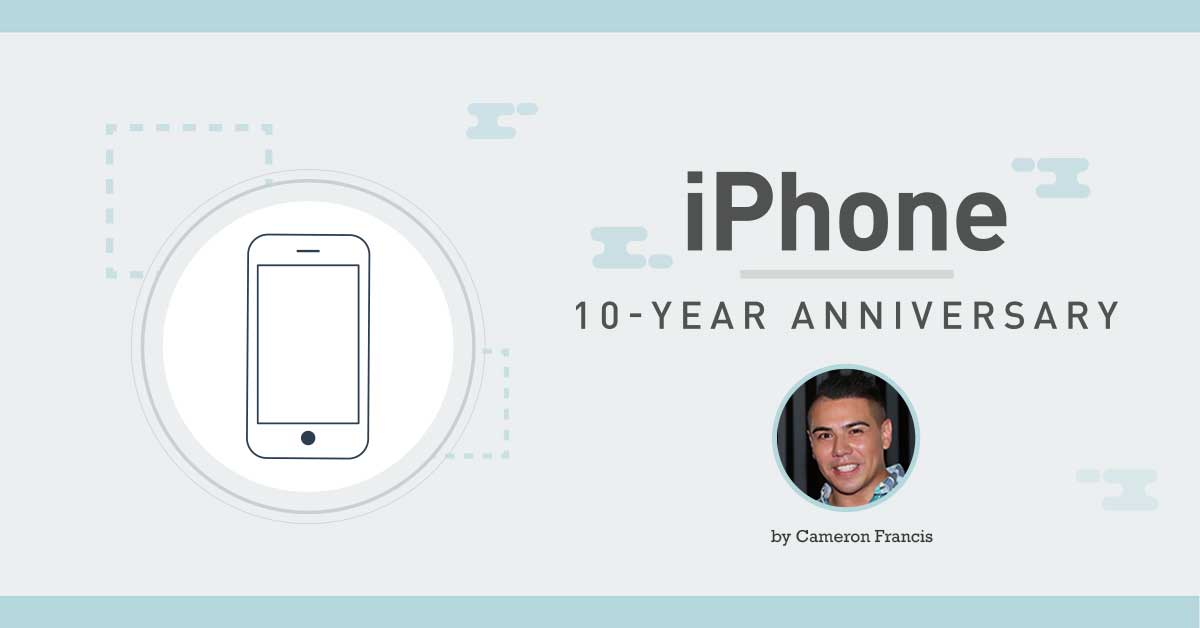
Introduction
“Every once in awhile, a revolutionary product comes along that changes everything….”
When Steve Jobs made this brash announcement in 2007, it sounded like misplaced bravado to everyone who wasn’t an Apple enthusiast.
The competition scoffed, reviewers ridiculed, and most consumers were confused. Scratch that – you need to be in the same league to be called a competitor. So in their eyes, Apple wasn’t even worth their time.
If only they had a crystal ball.
That was the beginning of a revolution that has had a profound impact on the world. Now, nobody is confused. Nobody is laughing, and no one thinks it will ever get old.
See Apple iPhone 10-Year Anniversary Infographic
Ten years down the road and Apple’s iPhones are still the biggest selling smartphones in the world. They just keep raising the bar in quality and functionality, making the competition burn out (more on that later).
But how did Apple make such a successful product? It’s not the first great product, but no other has accomplished what it has done in recent times.
The brand speaks for itself. No need for public announcements or big reveals anymore, just point us in the direction of the latest iPhone and we’ll be there.
A large part of this has to do with Apple’s marketing strategy.
But mainly, Steve Jobs probably just DID have a crystal ball.
Apple Reinvents the Phone
There was really no need to do this. Everybody in the world was already in awe of the ever-evolving marvel of the mobile phone.
Motorola, Nokia, Treo, Palm and Blackberry had all unveiled phones that got people excited.
Smartphones revolutionised the phone industry by going beyond basic call and text and allowing people to go online, check their emails and more.
Nobody needed this.
But building something for the sake of addressing a need has never been Apple’s philosophy. What Apple believes in, is going the extra mile in providing high quality innovative products and services because people deserve nothing less.
The prevailing thought at the time was Apple had no business venturing into phone manufacturing, forgetting they once said the same about mp3 players. They were proven wrong…twice.
Why should a computer-maker dabble with the phone industry? They were two separate entities.
Not to Apple.
Steve Jobs and Co. saw an opportunity to do something for the world.
They wanted to make a phone that was easy to use.
A user-friendly phone that had to be smart, truly smart.
Sure, the current phones had their strengths, but they weren’t agile enough.
There wasn’t any room for creativity or range of options. You couldn’t quickly do something if you had a sudden thought in the middle of another task.
They were too slow, too dull, too keyboardy.
Let’s say you wanted to send a text; you would need a keyboard. But what if you wanted to watch a movie. Do you still need the keyboard?
Apple already had their eyes set on upgradeable and limitless apps, similar to what you could have on a computer. Whatever you can do on a laptop, such as working on spreadsheets, listening to music, watching your favourite TV show etc., you should also be able to do with a phone.
In order to enhance a phone’s versatility therefore, they had to get rid of the keyboard.
An All-Screen Phone
Could that even work?
At the time, it was difficult for people to see how it would. People were already used to their keyboards. They made it easier to navigate, or so we thought.
Then, there was only one button, the home button. Sure, maybe not so bad. After all, you can still use a stylus.
Nope, no stylus either. This was doomed to fail from the very beginning.
But the people saying this weren’t the people Steve Jobs spoke to when he mounted the stage on the 9th of January 2007.
Though Apple was reinventing the phone, they weren’t reinventing human beings. They had done their research, they had their target audience, and they had a killer marketing plan.
The Plan
Despite the supposed risk of making a phone that’s unlike anything on the market, there was little chance of the iPhone being a flop. Why? Apple already had a band of loyal customers waiting to buy whatever the company released next, thanks to the trust built-up in recent years.
But most especially, thanks to Apple’s latest and best product.
Piggyback Strategy: if you love the iPod, you’ll love the iPhone
Apple had a great product on the market already, and they were going to piggyback on its success. Demand for it had outstripped supply, so much so it no longer needed to be marketed.
All the iPhone had to do was ride on that success. And boy, they did.
In the press release on that day Jobs told his audience they were going to be releasing three revolutionary products, the first being a widescreen iPod with touch controls, then a phone and an internet communicator (Safari).
Rumours of an Apple phone had been swirling around for years, and following the success of the iPod, people couldn’t wait.
“…we’re learning from the iPod…..we’re going to ship our hundredth million ipod this year…,” it read.
There were already 100 million people who loved Apple products, 100 million people who were used to their iPod and 100 million people who would think it worth that extra cash to get an iPod and a smartphone mashed together.
All Apple had to do was release an ok product (by their standards). And truth be told, it was an ok product. The first iPhone had some major flaws which the competition pounced on, but all in all, it was a killer product.
Not a Follower, but a Pioneer
Despite being a relatively late arrival in the phone industry, Apple did not see itself as a follower. It was going to establish itself as a market pioneer.
Apple stepped in with all the charm and swag of an industry veteran and put its plan to action.
Their marketing strategy was to introduce a product that was “five years ahead of its time”.
They weren’t trying to copy what other companies had done by placing a strong emphasis on what their phones did, which others didn’t.
The all-screen phone was one way it accomplished that.
Another was the all-important internet browsing experience. No longer would consumers have to settle for mobile-version websites that looked nothing like the original.
They could now surf the web on their phones without realising they were on a mobile device.
So long competition, you’re never going to touch this! But they did.
The Critics Come Calling
It was easy to pick on the new guy because, let’s face it, Apple had no idea what it was doing. That was the general consensus from the industry’s top phone makers anyway.
As it turned out, not a lot of people thought it would succeed.
Former CEO of now defunct Palm had this to say about the first iPhone:
“We’ve learned and struggled for a few years here figuring out how to make a decent phone. PC guys are not going to just figure this out. They’re not going to just walk in.”
Microsoft’s then CEO Steve Ballmer was also highly pessimistic, because of the over-priced device.
“There’s no chance that the iPhone is going to get any significant market share. No chance,” he said.
And the hits just kept on coming. Reviewers from all over the world had something negative to say about the iPhone, but there was one thing they said that Apple agreed with: it should have secured 3G connectivity.
That big faux pas was thought to be the reason why the phone might fail, but its network partner AT&T didn’t have a problem with it.
One year later Apple launched the 3G version of the phone which was half the price on a contract, but the detractors still weren’t appeased.
“I couldn’t type on the [iPhone] and I still can’t type on it, and a lot of my friends can’t type on it. It’s hard to type on a piece of glass,” according to Mike Lazaridis, former CEO of RIM/BlackBerry.
What these competitors had ignored was that no matter what they thought of the products, only one opinion mattered: The Consumer.
Consumers Love It, But Will They Buy It?
There was little doubt in the minds of the iPhone creators that it would be a hit with consumers. After all, they had done the test run with a similar device, the -iPod, and it had won.
“The surveys are in and iPhone customer satisfaction scores are higher than we’ve ever seen for any Apple product. We’ve clearly got a breakthrough product and we want to make it affordable for even more customers as we enter this holiday season,” Apple reported.
This was high praise, because Apple had quite a number of stand-out products. At the time of the release, Apple had shipped 100 million iPods. So, this new product should outshine that…theoretically.
As it turned out, they were right.
Six months later, long queues formed outside Apple stores, and by the end of the one-year run of the first iPhone, 6 million had been sold to consumers in four countries on only four carriers.
By comparison, it took the iPod 4 years to reach 6 million in sales, despite the release of Windows compatible models from 2002.
The race was on. All they needed was a better strategy.
Keeping it Exclusive
Breaking into a new market with an outrageous price tag wasn’t going to work, unless you had something that was worth it.
It also had to be something people were longing for, but it didn’t have to be everyone.
The demographic was set – young, savvy, middle class, discerning and frustrated. Despite the assertion by Lazaridis that he and his friends couldn’t use it, it made no difference because they weren’t the target audience.
Unlike with the iPod and many other devices, this wasn’t originally planned as a mass-market product. It was to be kept exclusive.
Nokia had three products on the market in 2007-8 that had sales of 15 million each, but Apple wasn’t bothered.
It wasn’t a snobby product, and they weren’t going to keep it from those who wanted it, but it just wasn’t released that way.
It was a high-end product and it was going to be profitable at all costs.
To ensure this, Steve Jobs was going to generate buzz and lots of lust. People would clamour for it, but they wouldn’t be able to get it unless they were customers of AT&T.
Scarce is Sexy – AT&T Exclusive Deal
The man with the plan needed his product to work. He wanted to accomplish something that had never been done before, so for that he needed partners.
Steve Jobs met with the head of AT&T in 2005 to pitch an idea for an exclusive deal that would enable him to provide a Wi-Fi enabled phone to customers, with a data plan and services (contract) at a ridiculous price.
The phone was going to be expensive enough already, he didn’t want the data costs to be high as well. Two years later, the deal was finalised.
In what will go down as one of the most controversial deals in telecoms history, the iPhone was released exclusively on AT&T in the US. The same exclusive deal would be replicated in the UK, Germany and Japan.
People were furious. They called it ‘market manipulation’, they called it a ‘monopoly,’ and a ‘collusion’. But that didn’t change it from what it actually was – good business sense.
It wasn’t about shutting out the competition, it was about providing a top-notch service, at a time when data costs were astronomically high.
The initial five-year agreement wouldn’t hold up past the next two releases, but by then Apple had already gotten their answer: networks had caught on to their vision. Success was now guaranteed.
Despite the limited sales, demand for the product was heightened by the second launch. More people wanted to be part of this exclusive group of people with a futuristic phone.
Not only was Apple going to release better products in the years ahead, it had no plans of changing its deal with AT&T any time soon. When the iPhone 3G was released, more people were willing to abandon their networks.
Losing International Market Share
Why only four countries for the initial launch and why did it take so long to get there?
The critics ridiculed the phone, the marketing strategy, the exclusive deal, the limited international release and the lost revenue.
Apple was already aware of their errors, but they weren’t going to make the same mistake twice.
It was the first-time smartphones weren’t specifically targeted at corporate clients. The price was a huge deterrent, so they played it safe.
Later iterations of the phone not only had better specs, but also cost less on contract.
In reality, the first iPhone seemed like a test run, a learning opportunity, because every other iPhone since has lit the smartphone world on fire.
iPhone Takes the Throne
The warm up was complete, it was now time for the game. Apple had taken all the feedback, consumer surveys, criticisms and revenue and was now ready to reveal the spectacular.
Behold the phone that will end all other smartphones…again.
The next few phones will capture the world by storm, constantly outdoing the previous versions’ sales figures.
iPhone 3G and 4, would all sell at least 1 million units in the first weekend, a feat which took the first iPhone nearly two and a half months to achieve.
iPhone 3G was of course, 3G enabled, meaning it was twice as fast, but it was also half the price and could use third-party apps through the newly unveiled App Store.
It’s an App World
When does a phone become more than a phone?
The iPhone was always meant to be a mini-computer, and with the release of the App Store in 2008, it was able to achieve just that.
Apple no longer had to come up with all the ideas. Anyone anywhere could design an app using their UIkit and make it available.
Now, you could do what every other smartphone was capable of, but with many more ways to do. Learn to cook, check your calorie intake, take online courses, go on Facebook. Anything was possible.
Within two months of its release, there were 3,000 apps available on the App Store, and 600 of them were free. Offering 600 different things to do on a phone was too irresistible.
Although, to fully maximise this, you would need Wi-Fi connection at home/work and good data connection during your commute, and that was the selling point.
International Dominance
Apple’s first phone was expensive, but the data costs were less than what they could have been. The later models were half the price on contract, enabling carriers to be more creative in their data pricing.
After all, Apple couldn’t possibly replicate its exclusivity deal all over the world. And so, beginning with iPhone 3G, 66 countries were added to their list, and the number has kept growing ever since.
From their experience with the original device, Apple and AT&T discovered that not only did a contract bring longer term customers, but they also spent more on services that enhanced their mobile phone experience.
Apple was therefore able to convince carriers that even at a discount to the customer – which they would cover – users would pay for premium services, so they would still make good profit.
After all, who wouldn’t want the chance to explore as many apps as possible on your 8GB/16GB phone? Oh wait, not enough space.
In response to this, Apple increased the storage, welcomed more developers, and kept up with its astronomical sales.
No More TV Ads?
One of the most surprising features of Apple’s marketing strategy for the iPhone is that they stopped TV ads.
Sure, you saw a few iPhone ads, but none of them after the first phone was made by Apple. That task was delegated to the carriers, who wanted to entice people to buy from them.
But there were clear guidelines given by Apple’s geniuses on how they should go about it. The sales success of the phones meant it wasn’t a gamble for carriers, and it was a huge cost saver for Apple.
Other phone makers would follow their cue by allowing carriers to do a lot of the heavy lifting, but not quite to the same degree.
But this wasn’t manipulation on Apple’s part, as they never forced carriers to advertise on their behalf.
All they had to do was keep making great products and not make a mess of it. But some things are impossible.
The first “Oops!”
When you’re making revolutionary products and constantly testing and pushing boundaries, you are bound to make mistakes.
Apple’s first controversy regarding their exclusive deal with AT&T was bad enough, but no one was prepared for a problem related to the actual product, not like this anyway.
The launch of the iPhone 4 was yet another hugely successful milestone for the company. This was by far the best iPhone yet.
Better camera, better resolution, better phone.
It had Retina display, FaceTime video calling and a whole new design. It wasn’t rounded at the bottom anymore, it was flat, and thin. 24% thinner than the 3GS in fact.
It was so good, that the competitors were silent, probably because no one could hear what they were saying.
Hello! Can you hear me?
With all the changes made to the latest model, something had to give. In this case, it was poor signal.
You could stand at the same spot and enjoy a clear conversation with a friend then all of a sudden, the line would go dead.
One person, an error. A few hundred, still an error. But hundreds of thousands of users across the world was a disaster for Apple.
Of all the things that could go wrong with a phone, losing signal because of how you hold it shouldn’t be one of them, and yet, somehow it happened.
The new antenna design which was able to boost reception when there was clear signal, was vulnerable when you had low signal, and if your finger covered the bottom left portion of the phone you could kill the signal completely.
What response would the computer kids give now?
Still the Best Phone in the Business
Despite the ‘minor issue’, Apple maintained that the iPhone 4 was still the best smartphone in the world.
Not only that, but it wasn’t (according to them) that the finger blocked the signal, but that the formula their phone used to calculate signal was different from what the carriers were using.
Yeah, that explanation was weak and no one was buying it.
“As usual, whether the subject is antennas, Flash or shipments, there is more to the story and sooner or later, even people inside [Apple’s] distortion field will begin to resent being told half a story,” said James Balsillie, former co-CEO of Rim.
Even former board member, Google CEO Eric Schmidt could smell the blood in the water, though he wasn’t the least bit concerned about the antenna issue.
He went after Apple’s supposed closed system, which made all partners, app developers and carriers pretty much dance to their tune.
Steve Jobs was undeterred. They moved quickly to fix the antenna issue and stumbled on another winning strategy – accessories.
Can I get a Phone Case Please?
Instead of replacing the millions of flawed phones, Apple designed a case that would prevent signal interruption.
This set off a new trend of accessories for the iPhone. The previous iterations of the phone weren’t particularly case-friendly, but this one was.
And so, a new market was born. Out of a close shave came a new star, and a few harsh words behind closed doors for the critics.
Sales had never been better. The company was now bigger than former rivals Microsoft, Dell and Google, not to mention the now insignificant Palm and Blackberry.
Things were going so well until…
The World Loses an Icon
In August 2011, Steve jobs announced his resignation as CEO, though he would become the chairman.
Was it the end for Apple? The man who had single-handedly brought back his company from near bankruptcy (after he had been ousted) and had engineered Apple’s latest string of generation-defining products, was now taking a back seat.
Would the company still hold up?
There was barely enough time to finish dwelling on the fate of Apple until even worse news was released.
One of the most distressing events of the modern-era came when Apple announced on the 5th of October, 2011 that founder and chairman Steve Jobs had passed.
The world was in shock. From loyal fans to harshest critics, everybody mourned the passing of a great man.
Many believed this was undoubtedly the end of Apple as well, but not them.
Say Hello, Siri
Nine days after the passing of Jobs, Apple released the iPhone 4s.
Was it cold or calculated? Neither: it was custom.
Apple had a system. It was always about customer satisfaction, not their personal problems. It was a system put in place by the late great man himself. And so to honour him, they would continue his legacy.
It had all the bells and whistles you’d expect, plus a voice-over system that interacted with the user.
Artificial intelligence come to life? Only Apple could pull this off, and in good time too.
With this came an end to all the doubts about the future of the firm.
Apple has always been relentless in its pursuit of industry-shaping technology, and their next wonder would take the competition years to come up with something barely close.
Bear in mind that this is a company devoid of gimmicks. If it isn’t helpful or practical, they wouldn’t include it.
The first Siri may have been flawed, but it was still pretty awesome.
Consumers loved the latest phone more than the previous version, and so did investors.
That year, Apple surpassed Exxon to become the world’s most valuable company by market capitalisation. The company’s worth had doubled in the space of a year, despite all the hurdles it had to overcome.
It was by far, the most challenging year so far in the iPhone era, and they scaled through it like champs.
To navigate the next few years, Apple had to do something special.
The Empire’s First Strike
Despite the astronomical growth, new competition was brewing and they were hot on their heels.
Never had Apple been in a position where it felt as though its premier product was under fire. Or that was how it looked to people awaiting its latest release, while they marvelled at what the competition had cooked up.
But then, the rumour mill began.
Hints about the latest iPhone was causing a stir on the market. What was coming? Would it surpass the competition?
Absolutely!
The iPhone 5 was here. It was big, it was LTE and it was stunning.
This is what Apple had to say about their latest scientific marvel: “iPhone 5 is the most beautiful consumer device that we’ve ever created.”
Some would argue the most beautiful consumer device ever created, period.
They not only upgraded the phone as usual, but for the first time, they appeared to be making a change based on what consumers had demanded.
Listening to The Consumer
Siri wasn’t the only one listening to the consumer, Apple was too. That was how they changed the screen size after five years to a four inch screen.
Other smartphone makers had gone with larger screens and the consumer appreciation was massive.
Apple probably was reluctant to do it so there would still be a major distinction between their phones and their iPads, but it had to be done.
Apple bending to convention showed a different side to the company – one that was more warm and accepting of external ideas, not the one-man show it was perceived as.
But on the other hand, it had to do something to stay ahead of the competition.
Its manufacturing partner Samsung had picked up a few things along the way and was now making phones with a global impact close to the scale of the iPhone.
HTC, Nexus, Lumia and others were also banging on the doors of greatness. One push and it’ll topple over. One slip and they would worm their way through.
If One Won’t Do, Try Several
In reality, no one thought they could make a product to rival the iPhone, but they could beat Apple on price. Every other phone maker had different phone models each ear, with specific demographics and geographical locations intended for each one.
It wasn’t a one-price phone. After all, smartphones could be made for less, though they wouldn’t have the brains of higher-end models.
The demand for non-smartphones was fizzling out fast, but very few people outside the Western world could afford Apple products.
This strategy enabled Samsung to gain significant ground against their rival and yes, at last, they were finally rivals. Samsung had great specs which exceeded the iPhone in some areas, but their golden jewels were priced less.
Chinese companies had cheap smartphones that were making huge sales within and beyond the region.
Sales were still the highest they had ever been, but not growing as fast as they could. Sure, there is a plateau for every product, when you’ve done as well as you can, but Apple hasn’t reached its plateau. Not yet.
And if the competition wanted to make it a numbers game, they were prepared to go toe to toe.
Two Can Play That Game
There are 7 billion inhabitants of planet earth, 7 billion people need to be connected. Of the 2 billion handsets on the market, Apple’s share was but a blimp.
It was time for a different approach, another industry-defining moment. Apple was about to do something uncharacteristic – again.
For the first time, Apple released two new iPhones in one year – 5c and 5s.
But as you would guess, they had to do it in their own unique way.
The 5c was a ‘budget friendly’ version of the iPhone, featuring a plastic case and interchangeable back with different colours and it was a hit.
The mass appeal was overwhelming. It appeared to be a solid strategy. For only $100 on contract, the phone could be yours.
Now Apple had phones that were competing on the high-end and the middle. Over the following hundred days, Apple would sell roughly 100 million phones.
Apple had the winning number and the jackpot was huge. They were back in control. All the mini-competitors went scurrying off to try and find a new device, but they couldn’t compare any longer on performance or on price.
It was time to kick back, relax and enjoy the spoils of war. Or maybe not.
Time to Go Plus Size
By the time Apple was set to release the iPhone 6, they had already sold over half a billion iPhones.
The company had moved from a period when they had to decide what they thought was best because there was no one to lead the way to a place where it could gather valuable data and suggestions from its millions of global users.
This provided valuable intel that would inform their decision making process and yield even better results.
Even better? What could be better than consecutive years of 100 million sales?
Putting it Together
The double-trouble approach was just about to take a giant leap forward. Apple would release the iPhone 6 and iPhone 6 plus, a 4.7-inch phone and a 5.5-inch phone respectively.
What was the point? They had been listening.
For those who wanted to get more work done on their phones, or watch videos more clearly, or view pictures sharper. Whatever the reason, people wanted the option of a phablet and Apple gave it to them.
By releasing the plus-sized phones, Apple was acknowledging the decreasing fascination with tablets. Nobody wants to carry around a laptop, a tablet and a phone.
Something had to give. The laptop is too important, more so is a mobile phone. Leaving only one possible option.
By showing their responsiveness to clients’ demands, Apple has maintained their position on top of the food chain.
They successfully avoided the mistakes of companies such as Nokia and Blackberry, who felt consumers would buy whatever they put out, and didn’t pay enough attention to changing demand.
And this worked very well for Apple Inc.
The sales were astonishing. The result was the best sales years in their history…again. This one really crushed the competition.
Where is the Competition Now?
The old guard was gone. Nobody at the height of their prowess during the iPhone’s formative years was still around.
Samsung was the only one left to beat, and the lengthy court cases didn’t seem to be working.
Year after year, the world would look up to Samsung to see if the android based manufacturer would finally make a phone that would surpass the iPhone.
Every year, it fell short. As much as it would do somethings better than the iPhone, the final vote would still always go to Apple.
Here Comes Karma
But in 2016, after the release of the iPhone SE, which was another “budget” iPhone, Samsung finally did something remarkable.
They not only released their best phone ever, but it was better than the iPhone. Obviously, it was better than the previous versions, but it was so good, the Samsung Galaxy Note 7 would undoubtedly supersede the yet to be released iPhone 7.
It was water resistant, had state of the art iris recognition and a display so sharp it was unreal. Everybody loved it, even those that shouldn’t.
But then, it all went up in smoke.
A minor battery default caused the phone to heat up excessively. The phone and the company’s reputation was torched, barely after a month of its release, leaving Apple to laugh all the way to the bank.
For years Apple had accused Samsung of copying its designs, due to its intimate knowledge of their phones, as a co-manufacturer, but now it seemed justice had been served.
Only the Strong Survive
Later in 2016, Apple would release the iPhone 7 and the iPhone 7 plus, its latest and greatest productions so far.
In all honesty, the upgraded features weren’t as eye-popping as many expected, leaving many to think the company might be losing a step.
While the critics still abound, more so do the customers, and less so the competitors.
The world has gotten a lot smarter over the years, with eye-watering amounts being invested in R&D by phone makers the world over.
While there isn’t a single company left to go one-on-one with Apple, there are enough growing brands to keep taking chunks out of its potential space.
For its dominance to continue for the next ten years, it would have to keep modifying its approach to suit consumers’ present and future needs.
Conclusion
Call them anything you like but they do deserve the title of Genius. Apple has indeed revolutionised the market, and every smartphone maker owes them a huge debt of gratitude.
The work they have done to advance smartphones for the average person is astounding.
Just think of where your life would be without the features brought to us by Apple. Impeccable security, radical features and seamless synchronisation.
All thanks to one man’s brilliance, and the team he built.
Apple’s marketing strategy has not just been the most successful of any phone maker yet, but quite possibly of any paid product in the modern era.
No longer just a computing company – iPhone sales account for two thirds of Apple’s revenue, the industrial juggernaut has created a lasting legacy in the iPhone.
It is unclear how long this dominance will last, but with more great phones and continued study of their consumers, there really is no limit.
One billion phones sold in ten years across 14 products. Not bad for a computer company.
The only thing left for Apple to do is to make an iPhone for low-income earners.
Though not their method of operation, this could be the one addition that will guarantee total world dominance.
Here’s to wishful thinking.

